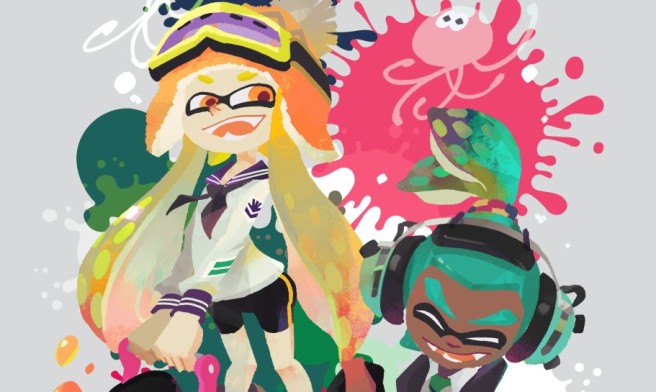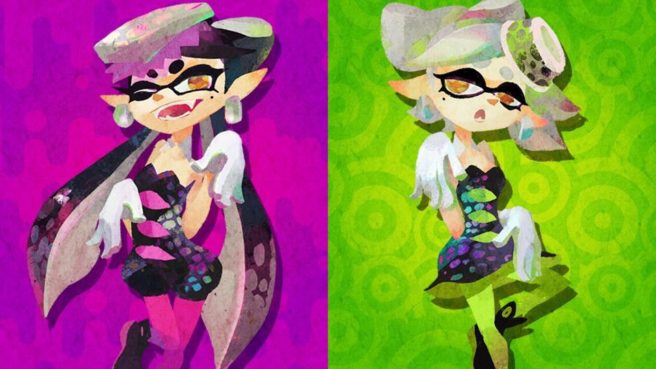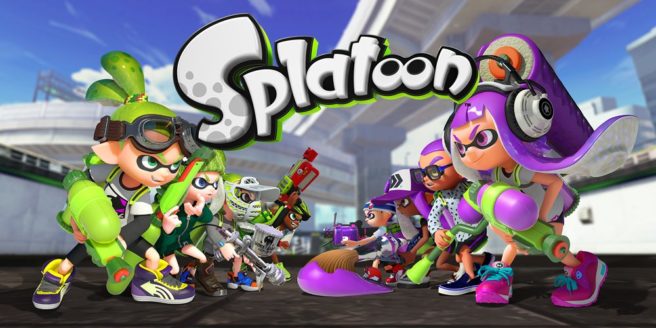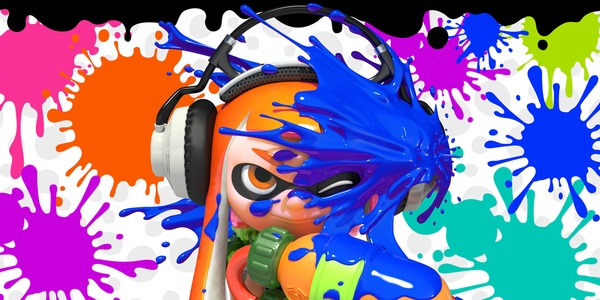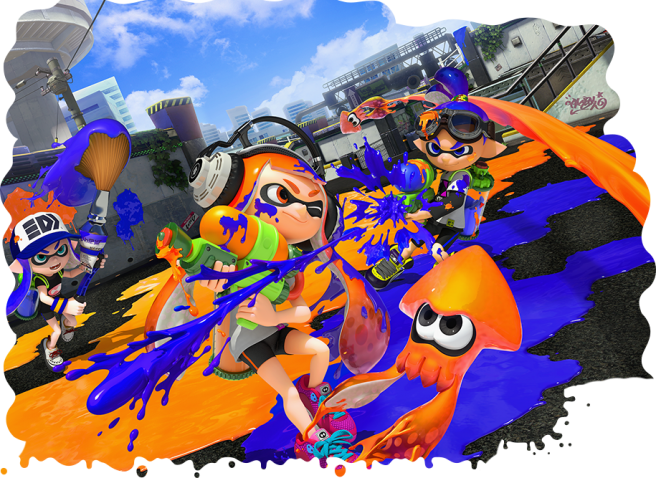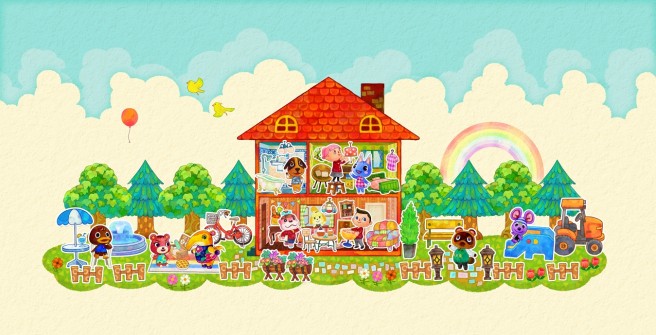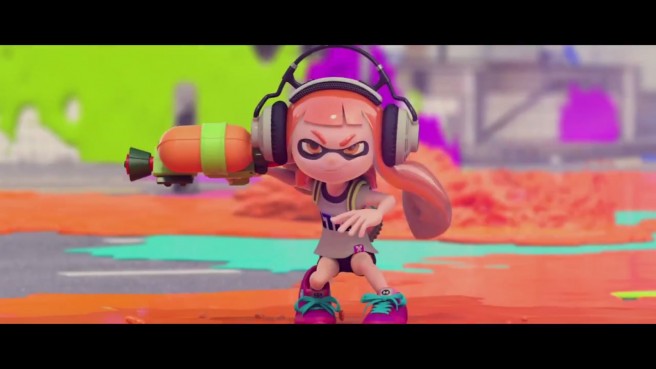Producer on Splatoon’s future
Posted on 8 years ago by Brian(@NE_Brian) in News, Wii U | 9 Comments
This week’s issue of Famitsu has an interview with Hisashi Nogami, the producer of Splatoon. One portion of the discussion touched on the game’s future.
Famitsu asks if it really is the end for Splatfests. According to Nogami, it was originally decided to run Splatfests for a year. Nintendo was able to continue those events, but they feel now is the right time to have them come to a close.
As for the future specifically, Nogami feels that the game is done. Nintendo has stopped with Splatfests and updates, but they’d still like to build excitement through events such as Splatoon Koshien tournaments. When asked about something like a sequel, Nogami said that Splatoon has been raised together with the fans who have been playing it, and they’d like to continue heading in that direction in the future with the utmost care.
More: Hisashi Nogami, Splatoon, top
Splatoon producers on the game’s success, Callie and Marie’s popularity
Posted on 8 years ago by Brian(@NE_Brian) in News, Wii U | 8 Comments
At Gamescom last week, IGN spoke with Splatoon producer Hisashi Nogami and Nintendo EPD general manager Katsuya Eguchi.
The Wii U shooter has been a big success having sold well over four million units. On the topic of its success, Nogami said:
“It felt like it has been a while since we created a brand new franchise. We’re really happy with the response to Splatoon and with the amount of fans who are supporting it.”
Speaking of popularity, the Squid Sisters Callie and Marie have really taken off. The two characters even ended up receiving their own amiibo and closed out Splatoon’s final Splatfest, which weren’t originally planned.
Nogami shared the following on the Squid Sisters:
More: Hisashi Nogami, interview, Katsuya Eguchi, Splatoon, top
Splatoon producer Nogami on the competitive scene, development, favorite weapon
Posted on 8 years ago by Brian(@NE_Brian) in News, Videos, Wii U | 1 Comment
At Gamescom, the ESL hosted Splatoon Showdown, an official eSports tournament. Game producer Hisashi Nogami was in attendance and took on a few interview questions during the event.
Nogami talked about the competitive scene, how Nintendo approached development for Splatoon, and his favorite weapon. You can watch the full interview below.
The full interview with @NintendoUK's Hisashi Nogami at the #Splatoon Showdown!
More on https://t.co/XyiifaGAq8! pic.twitter.com/cArfOm9EES— ESL Splatoon (@ESLSplatoon) August 17, 2016
More: Hisashi Nogami, interview, Splatoon
Splatoon producer on pre-launch jitters, possibility of a sequel
Posted on 9 years ago by Brian(@NE_Brian) in News, Wii U | 19 Comments
GamesMaster spoke with Splatoon producer Hisashi Nogami in its latest issue for a brief interview. At one point, Nogami reflected on how there were some jitters within the team before launch, as they weren’t sure how the multiplayer-focused game would be received.
Nogami told the magazine:
“We’ve dealt with online multiplayer in a number of titles up until now, but this was the first time we’d taken up the challenge of releasing a package game where multiplayer was the main mode. We were not 100 percent sure about how a few sections would be received, and so we’re really happy to see them being well received not only by experienced online gamers, but by a really broad range of players including children and female players too; it’s a real confidence boost. If we have the chance in the future, I’d like to build on online gameplay even more.”
GamesMaster followed those comments by pressing Nogami on the possibility of Splatoon 2 happening one day. When asked, he responded with the following:
“We want to raise this new IP with care, so maybe we’ll get a chance to make it happen if players support us.”
Splatoon updates technically ended last month. But at the Splatoon Koshien 2016 finals a couple of weeks ago, Nogami hinted at possible new content for the shooter.
More: Hisashi Nogami, interview, Splatoon, top
Producer hints at possible new content for Splatoon
Posted on 9 years ago by Brian(@NE_Brian) in News, Wii U | 23 Comments
The finals for Splatoon Koshien 2016 were held in Japan a few hours ago. As the tournament came to an end, producer Hisashi Nogami came on stage and delivered a short speech.
Nogami started out by talking about how Splatoon debuted for the first time on stage nearly one year ago. He also mentioned that the team owes the progress and success thanks to folks like the ones gathered there, the ones who unfortunately were unable to participate there, and everyone watching the stream at home for their constant support and encouragement.
Nogami moved on by again stating that Splatoon came as far as it has is thanks to players like the ones he’s looking out at right now and has been thinking about ways he can express his appreciation. While Nintendo did say that updates would wrap up at the end of this month, he noted: “I know we announced that the content updates were going to end in January, but it’s possible we might be able to do something more in the future. Just please give us some time. We hope you’ll continue to enjoy Splatoon and the Squid Research Lab!”
You can get a look at Nogami’s speech below. Even though it’s in Japanese, it’s worth a watch since you can see how emotional he gets, and it really comes across how thankful he is.
More: Hisashi Nogami, Splatoon, top
Splatoon devs share background info on stages, talk about the end of updates, more
Posted on 9 years ago by Brian(@NE_Brian) in News, Wii U | 9 Comments
This week’s issue of Famitsu has more coverage of Splatoon. There isn’t any news about the game itself (which was to be expected), but there is a 4-page interview with the game’s developers. Famitsu caught up with producer Hisashi Nogami plus co-directors Tsubasa Sakaguchi and Yusuke Amano. They shared some interesting background information about stages, spoke about the end of updates and why they’re coming to a close, and more.
There is quite a bit here, so let’s get right to it. Head past the break for a summary of the interview.
– Most of the stages in Splatoon are based on marine products, but only Under Deca Line Girder Bridge (Urchin Underpass) isn’t. It’s based on Jujo Road, an actual road in Kyoto which is nearby Nintendo’s office. The ? kanji means ten, which can also become Deca in Greek. And ? means line, hence Deca-Line. Deca-Line is the name of the highway, and this stage is right underneath it, hence the “Under”.
– How the Deca-Line stage came to be included: art director Seita Inoue has a habit of sketching things nearby him. One day he drew a night view seen from the company building. When the development team was thinking about stage designs, they happened to find this sketch, and since it fitted many of the stage designs, it got picked. They were looking for a place with a realistic sense that has an origin of grey-toned neutral color and could be vandalized with colors.
More: Hisashi Nogami, interview, Splatoon, top, Tsubasa Sakaguchi, Yusuke Amano
Splatoon devs – single-player talk, unlikely for 3DS, still no voice chat plans, no paid DLC
Posted on 9 years ago by Brian(@NE_Brian) in 3DS, News, Wii U | 23 Comments
A few hours ago, Game Informer published a new interview with Splatoon co-director Yusuke Amano and producer Hisashi Nogami. The developers talked about things like the single-player campaign, why it wouldn’t work well on 3DS, and no plans for voice chat or paid DLC.
A good amount of Amano and Nogami’s can be found below. You can read the full interview over on Game Informer.
More: Hisashi Nogami, interview, Splatoon, top, Yusuke Amano
Animal Crossing: Happy Home Designer devs – spin-off origins, decision to focus on house creation, more
Posted on 9 years ago by Brian(@NE_Brian) in 3DS, News | 3 Comments
Last month’s issue of Japanese magazine Nintendo Dream features an interview with producers Hisashi Nogami and Aya Kyogoku. Throughout the discussion, Nogami and Kyogoku touched on such topics as how the game to be and how it became a spin-off, the decision to focus on house creation, and more.
Our translation of the two developers’ comments is now in. Read up on what they shared with Nintendo Dream below.
ND: What was the original starting point of the project?
Nogami: Although many customers have accepted Animal Crossing, these games have an aspect that you can do anything and if you don’t decide to do something by yourself, the game won’t progress. Therefore I guess it is a title that divides people.
ND: You say that while New Leaf has sold more than 4 million copies [in Japan]!
Everyone: (laughs)
Kyogoku: I’m truly grateful that so many people have played the game, but I also think that there are people who think that the gameplay doesn’t suit them or they don’t understand what the game is about.
Nogami: So when it came time to create the next Animal Crossing, it turned out as a spin-off that focuses on an element of the Animal Crossing instead of being a traditional game.
Splatoon producer on the game’s origins, 4-on-4 matches, Super Jump, and name
Posted on 9 years ago by Brian(@NE_Brian) in News, Wii U | 16 Comments
This month’s issue of Nintendo Dream has yet another interview with one of the developers behind Splatoon. This time, the Japanese magazine spoke with producer Hisashi Nogami.
Going back to the origins of Splatoon, Nogami commented on how program director Shintaro Sato came up with the idea of inking. Sato wrote a program for a drawing system, which included affixing textures on models and processing shadows. He thought at the time, “If I replace a shadow with the possibility of repainting with a color, wouldn’t that be a new way to play?”
Nogami also spoke about the decision to feature 4 on 4 matches in Splatoon:
Nogami: It’s not like we couldn’t have made 3 vs. 3 battles, but if just one player is splatted, the balance changes drastically and the enemy team can make a push in one go.
Nogami: On the other hand, when we tried increasing the number of players, the effect of splatting one person was small.
Nogami: However, when we tried 4 vs. 4, just splatting one player got the other team into a quite unfavorable situation. It is like a power play in ice hockey.
More: Hisashi Nogami, interview, Nintendo Dream, Splatoon, top
Splatoon devs on the map rotation, content updates, and more
Posted on 10 years ago by Brian(@NE_Brian) in News, Wii U | 18 Comments
In this month’s issue of Japanese magazine Nintendo Dream, there’s an interview with some of the Splatoon developers. That includes directors Yusuke Amano and Tsubasa Sakaguchi as well as producer Hisashi Nogami.
Nintendo Dream starts off by asking how matchmaking works. Amano mentions that rather than focusing on levels, the game pairs players with similar playstyles in Turf War. Levels are more of “an indicator for how long the person has played the game.”
Since Splatoon matches users together based on how they play, Amano notes that those who tend to splat enemies are likely to play together. Likewise, those who concentrate on painting rather than splatting are more likely to get paired up.
